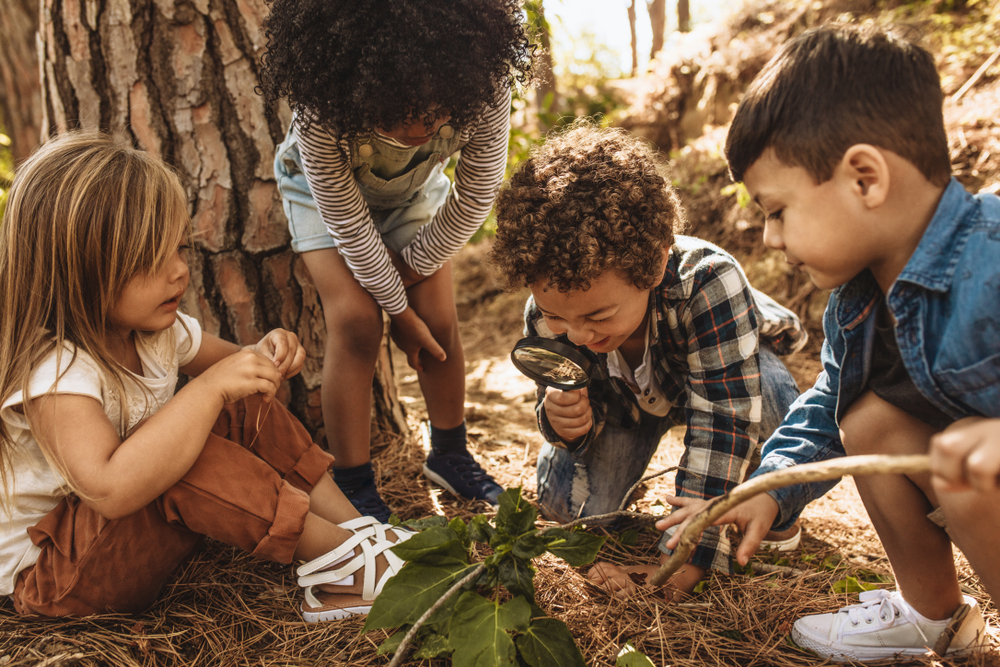
Welcome to Early Childhood Education Level 4
Lanie Lee, Early Childhood studentI was a stay-at-home mum, and I was looking for a career, not just a job. I wanted to make a difference within my community and impact young children’s lives.
Me ōu mihi tonu rā.
Congratulations to you my friend.
You have made an excellent choice to take control of your future and help our tamariki learn and grow in a safe and supportive environment.
Throughout this course, you will be introduced to the context of Early Childhood Education in Aotearoa.
This will include the following:
- Creating and using age-appropriate resources for the development of young children
- Early childhood curriculum — Te Whariki
- Assessments for learning and teaching practice in an early childhood setting
- Professional methods informed by learning and development theories, government strategies, and policy
- Using Māori concepts to engage and inspire children
- Human development and learning
- Health and safety policies and procedures in practice, plans, and evaluation.
Becoming a kaiako
You’ll learn how to nourish the development of the children in your care by using proven methods and inspiring concepts. To help you succeed, you will build on your communication skills. Kaiako acts as a link within a chain between tamariki and whānau so you will spend time learning how to support your connections with:
- babies, toddlers, and young children (tamariki)
- parents and whānau (family)
- your colleagues.
Assessments
Assessments will be completed in class under the guidance of your tutor. Your tutor will discuss the assessment schedule with you and outline assessments with you at the beginning of each course.
Taking and submitting photos
You will be required to take and submit photos for assessments as evidence of your work. Please ensure you have permission from anyone in your photo. We encourage you to exclude other people if possible and focus on activities, wall art, and other areas of your centre that do not have people in it.
To obtain permission, you will need to complete the form below for each person in your photo. Download and store the document where you can print and use it as many times as you need. If there are any people in your assessment evidence that do not have completed permission forms submitted with your assessment, the assessment will be marked incomplete.
If you have captured people in your images, and you are unable to crop them out, or get permission from their parent or caregiver, please block out any identifying features.
Please only take photos for assessment purposes. Do not share these photos anywhere other than submitting them for marking. Never take and share photos from your centre on social media, or other public platforms.
Permission must be obtained from the child's parent or caregiver if your assessment requires the involvement of a child for:
- the planning of a learning opportunity
- observation
- photographic evidence.
Permission and submission
- Complete this waiver with the child's parent or caregiver to obtain the required permission.
- Submit a JPG, PNG, or PDF version of the completed document for each identifiable child along with the images when submitting your assessment files.
Placement goals
Placement will occur in courses 2 and 3 of the programme. Your tutor will outline the expectations, give you guidance and prepare you for your work placement. Remember that this is an opportunity to put your learning into practice, ask questions, get involved and immerse yourself in the experience as this is an amazing opportunity to support your learning.
Get involved
The activities in this programme are designed for you to gain experience and give you confidence while working with children aged 0-5. As the saying goes, 'the more you put in, the more you get out.' The activities will support the work you are currently doing while studying. We encourage you to take the time to deeply consider each activity to gain the biggest advantage from your course of study and prepare you for the assessments.
If you love it, keep going!
After participating in this engaging programme of study, you will be ready and able to move on to the next step in your course of study: Diploma in Early Childhood Level 5 programme.
The course is divided into four modules, each with assessments.
| Module Name | Overview |
|---|---|
| Context of Early Childhood Education in Aotearoa New Zealand |
|
| Legislation and Ethics in Practice |
|
| Planning for Intentional Teaching |
|
| Child Development and Learning |
|
Learning hours are asynchronous. This means you complete them in your own time. There is no set class time, and learning takes place at all different times for students enrolled in the programme. You are encouraged to interact with other students through forums, journals, and group messaging. Keep in mind that not everyone likes to study when you do, so you may need to wait for a response.
Total learning hours are 600 hours. That is about 31.5 hours per week, including self-directed learning and practicum hours.
The learning hours include:
- reading, watching, and completing the activities on the online campus
- completing assessments
- self-directed practical.
Get qualified!
A total of 60 credits are awarded for the programme.
In-class assessments will be awarded an achieved or not-achieved result. All learning outcomes must be met to obtain an achieved result. All assessments must be completed in full with all answers correct, for an achieved result.
Assessments are recorded as follows:
- Achieved – all work/unit has been achieved to the standards set in the assessment and performance criteria.
- Not Yet Achieved – the student has yet to complete the relevant work to be awarded the assessment or unit.